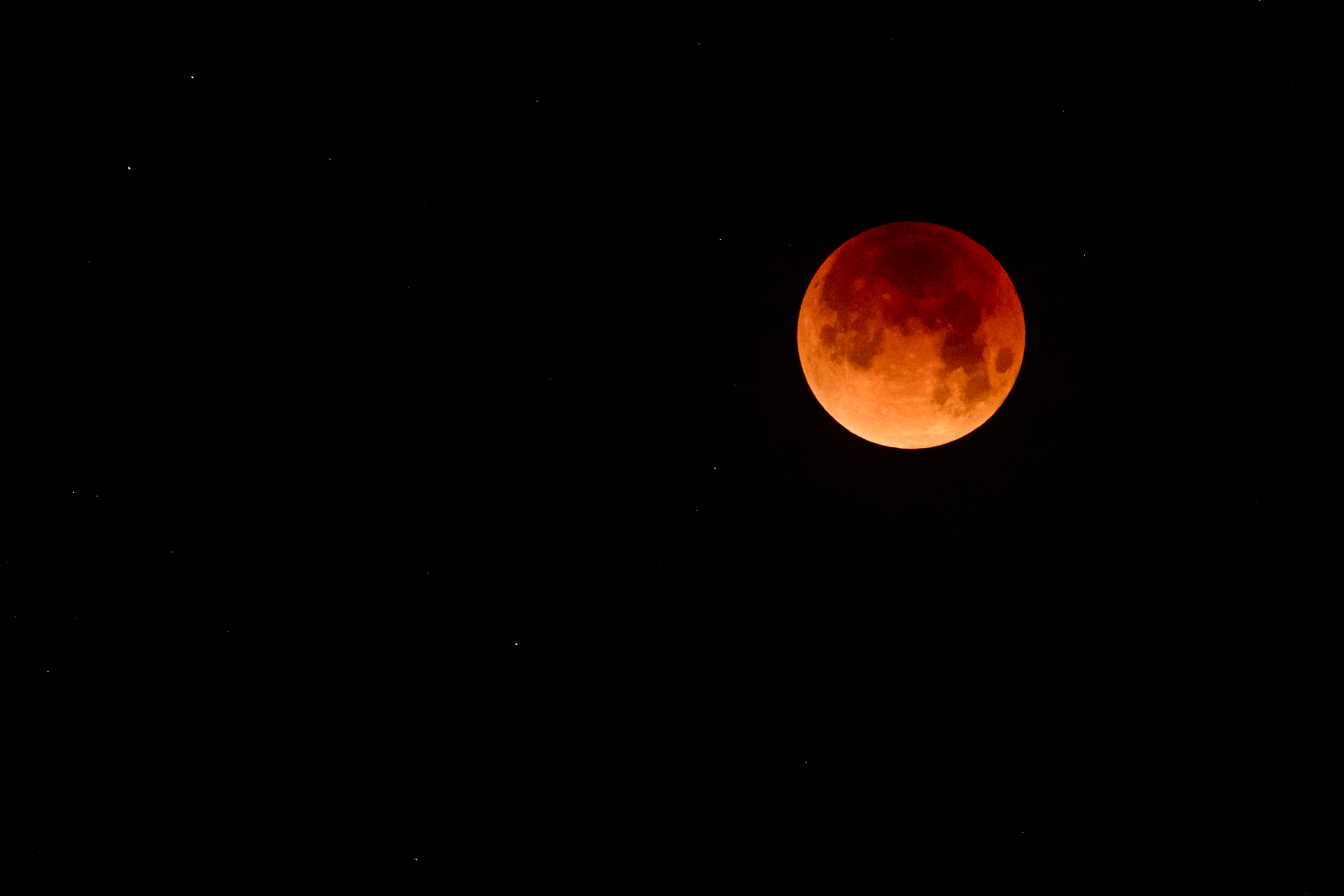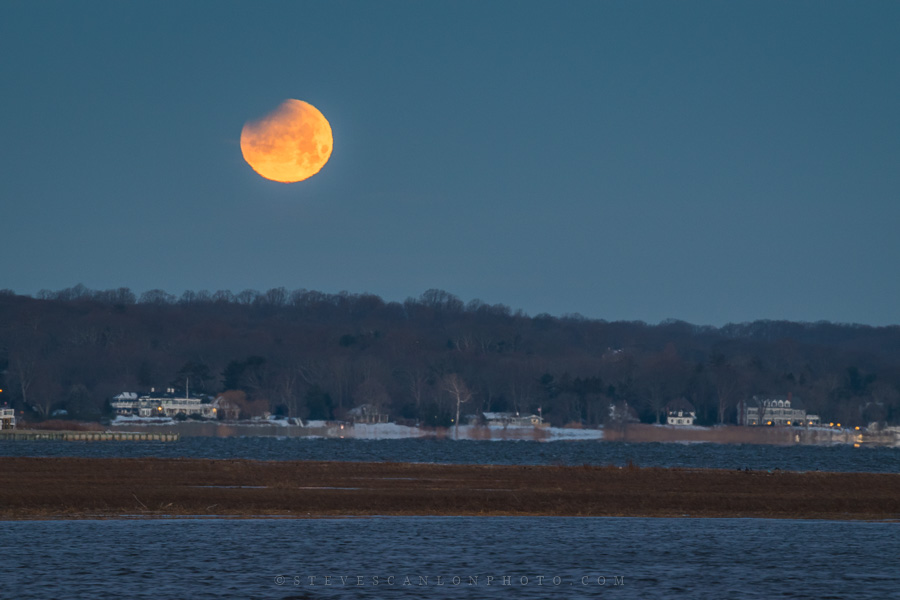Rare Super Blue Blood Moon Eclipse Thrills Millions Around the World
The second full moon of January passed through Earth's shadow in a Super Blue Blood Moon eclipse today (Jan. 31), a rare lunar sight visible to millions of observers around the world.
Today's lunar eclipse was the first to coincide with a Blue Moon – a second full moon in one month – in North America in over 150 years. It was also the second "supermoon" of 2018, with the moon appearing slightly bigger and brighter than usual due to its closeness to Earth. And to top it off, the supermoon passed through Earth's shadow this morning, casting a reddish hue on the lunar surface for more than 4 hours.
This lunar eclipse was visible in all 50 U.S. states as well as Australia and eastern Asia. Skywatchers in the western U.S. had the best view of the eclipse. Farther east, the moon set beneath the horizon before the eclipse came to an end. Clouds also obstructed the view in much of the U.S., but skywatchers and astrophotographers still managed to catch a glimpse of the "blood moon" from across the country. [In Photos: The Rare Super Blue Blood Moon Eclipse of 2018]

The eclipse began at 5:51 a.m. EST (1051 GMT), when the moon began to enter the outer portion of Earth's shadow, known as the penumbra. During the penumbral phase of the eclipse, which lasted about an hour, the moon began to darken as the shadow slowly moved across its surface.
At 6:48 a.m. ET (1148 GMT), the moon began to enter the darker, inner portion of Earth's shadow, or the umbra. This phase of the eclipse, known as a partial eclipse, is when the moon began to appear red. That red tint is the result of sunlight scattering in Earth's atmosphere, the same effect that causes sunsets and sunrises to appear red.
By 7:51 a.m. EST (1251 GMT), the moon was totally submerged in Earth's umbral shadow, marking the beginning of the total lunar eclipse. During a live webcast by the Slooh community observatory, astronomer Paul Cox said that this lunar eclipse was "by far the best one I've ever seen." While skywatchers along the U.S. East Coast were not able to see this phase of the eclipse, as the moon had already set, spectators along the West Coast had an incredible view of the celestial sight.
Space.com's Calla Cofield witnessed the eclipse with hundreds of eager skywatchers at the Griffith Observatory in Los Angeles. E. C. Krupp, director of the Griffith Observatory, provided occasional commentary during the eclipse. When the moon was only seconds away from emerging from Earth's inner shadow (the umbra), marking the end of totality, Krupp talked briefly about how various ancient cultures believed that lunar eclipses occurred because a being or creature was swallowing the moon.
Get the Space.com Newsletter
Breaking space news, the latest updates on rocket launches, skywatching events and more!
In some of those cultures, people chanted and made loud noises to scare the create away, and free the moon. In honor of those ancient stories, Krupp led the crowd in a chant of "Dragon, be gone!" After about a minute, when a sliver of the full moon had emerged from the umbral shadow, Krupp announced to the crowd that the chant had been a success.
"Griffith observatory is all about putting people 'eyeballs to the universe,'" Krupp said. "And it is in fact the best piece of public observatory real estate on the planet. Not every eclipse is visible from Griffith Observatory and the weather is not always cooperative when it is. But tonight, for this waaaay past your bedtime 'super blue blood total eclipse' we've got ideal conditions and a big group of people early in the morning."
The moon completely emerged from the dark, red shadow at 10:11 a.m. EST (1511 GMT), after which it spent about another hour once again making its way through the penumbra. During this time, the darker-than-usual moon slowly began to return to its normal level of brightness.

Today's total lunar eclipse was the only one that will be visible in North America all year. However, another total lunar eclipse on July 27 will be visible from South America, Europe, Africa, Asia and Australia. The next total lunar eclipse in North America will happen on Jan. 21, 2019.
Editor's note: If you captured an amazing photo or video of the total lunar eclipse and would like to share it with Space.com for a story or gallery, send images and comments to spacephotos@space.com.
Space.com senior writer Calla Cofield contributed to this report from Los Angeles. Email Hanneke Weitering at hweitering@space.com or follow her @hannekescience. Follow us @Spacedotcom, Facebook and Google+. Original article on Space.com.
Join our Space Forums to keep talking space on the latest missions, night sky and more! And if you have a news tip, correction or comment, let us know at: community@space.com.

Hanneke Weitering is a multimedia journalist in the Pacific Northwest reporting on the future of aviation at FutureFlight.aero and Aviation International News and was previously the Editor for Spaceflight and Astronomy news here at Space.com. As an editor with over 10 years of experience in science journalism she has previously written for Scholastic Classroom Magazines, MedPage Today and The Joint Institute for Computational Sciences at Oak Ridge National Laboratory. After studying physics at the University of Tennessee in her hometown of Knoxville, she earned her graduate degree in Science, Health and Environmental Reporting (SHERP) from New York University. Hanneke joined the Space.com team in 2016 as a staff writer and producer, covering topics including spaceflight and astronomy. She currently lives in Seattle, home of the Space Needle, with her cat and two snakes. In her spare time, Hanneke enjoys exploring the Rocky Mountains, basking in nature and looking for dark skies to gaze at the cosmos.









